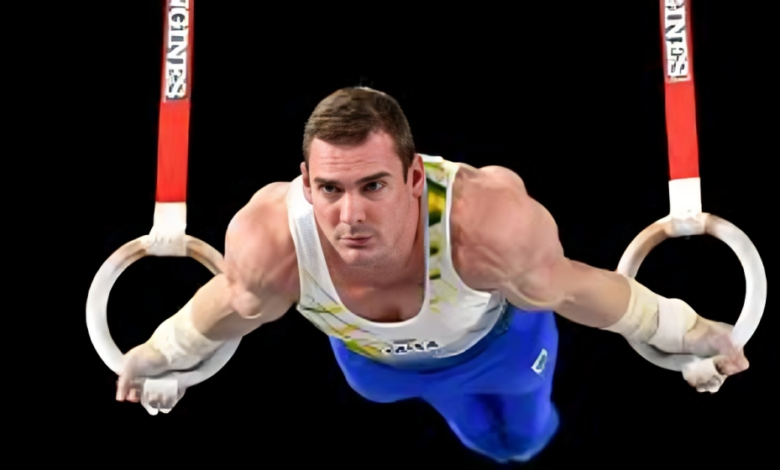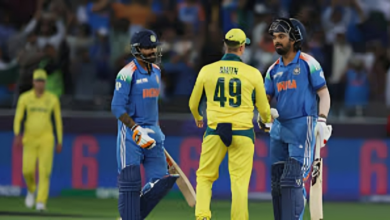Gymnastics Rings Olympics A Comprehensive Guide

Gymnastics is a sport that combines strength, flexibility, and artistry. Among the various apparatus used in gymnastics, the rings stand out as one of the most challenging and awe-inspiring. The gymnastics rings Olympics events have always been a highlight, showcasing the pinnacle of human strength and control. In this article, we will delve into the history, techniques, and significance of gymnastics rings in the Olympics, while also addressing common questions and providing SEO-optimized content.
Table of Contents
- Introduction to Gymnastics Rings
- History of Gymnastics Rings in the Olympics
- Techniques and Skills on the Rings
- Training for Gymnastics Rings
- Notable Olympic Gymnasts on the Rings
- The Future of Gymnastics Rings in the Olympics
- FAQs
Introduction to Gymnastics Rings Olympics
Gymnastics rings, also known as still rings, are a men’s artistic gymnastics apparatus. They consist of two rings suspended from a rigid frame, approximately 2.8 meters above the floor. The rings themselves are made of wood or plastic and are attached to straps that allow for minimal movement. The primary challenge of the rings is maintaining stability while performing a series of strength and swing elements.
The gymnastics rings Olympics events are a testament to the incredible upper body strength, core stability, and precision required to excel in this discipline. Athletes must demonstrate a combination of static holds, dynamic movements, and seamless transitions to impress the judges and secure high scores.
History of Gymnastics Rings in the Olympics
Early Beginnings
The inclusion of gymnastics rings in the Gymnastics Rings Olympics dates back to the early 20th century. The first modern Olympic Games in 1896 featured various gymnastics events, but it wasn’t until the 1924 Paris Olympics that the rings were officially included as a separate apparatus. Since then, the rings have been a staple in men’s artistic gymnastics.
Evolution of the Apparatus
Over the years, the design and materials of the rings have evolved. Initially, the rings were made of iron and were significantly heavier. Modern rings are made of lighter materials, allowing for greater flexibility and reduced risk of injury. The height and spacing of the rings have also been standardized to ensure consistency across competitions.
Memorable Moments
The gymnastics rings Olympics events have produced numerous memorable moments. One of the most iconic performances was by Soviet gymnast Albert Azaryan, who won gold medals in 1956 and 1960. His signature move, the Azaryan Cross, remains one of the most difficult skills on the rings.
Techniques and Skills on the Rings
Static Holds
Static holds are a fundamental aspect of gymnastics rings routines. These Gymnastics Rings Olympics positions such as the Iron Cross, Maltese Cross, and Planche. Each of these holds requires immense upper body strength and core stability.
- Iron Cross: The athlete holds the rings at shoulder height with arms fully extended to the sides, forming a cross.
- Maltese Cross: Similar to the Iron Cross, but the body is held parallel to the ground.
- Planche: The athlete holds the rings with arms fully extended and the body parallel to the ground, but with the legs extended backward.
Dynamic Movements
Gymnastics Rings Olympics movements on the rings involve swinging and transitioning between positions. These include skills like the giant swing, dislocates, and handstands.
- Giant Swing: A full rotation around the rings, starting from a handstand and returning to the same position.
- Dislocates: A backward rotation from a support position to a hang and back to a support position.
- Handstand: A static hold where the athlete balances upside down on the rings with arms fully extended.
Dismounts
The dismount is the final element of a rings routine and is crucial for scoring. Common dismounts include double backflips and full-twisting double layouts. These require precise timing and control to land successfully.
Training for Gymnastics Rings
Strength Training
Strength is the cornerstone of Gymnastics Rings Olympics rings performance. Athletes focus on building upper body strength through exercises like pull-ups, dips, and ring-specific drills. Core strength is also essential for maintaining stability during holds and transitions.
Flexibility and Mobility
Flexibility and mobility are crucial for executing skills with proper form and reducing the risk of injury. Stretching exercises, yoga, and mobility drills are commonly incorporated into training routines.
Skill Development
Skill development involves practicing specific elements on the rings. This includes breaking down complex skills into smaller components and gradually building up to the Gymnastics Rings Olympics movement. Coaches play a vital role in providing feedback and ensuring proper technique.
Mental Preparation
Mental preparation is often overlooked but is equally important. Visualization techniques, mindfulness, and goal setting help athletes stay focused and confident during competitions.
Notable Gymnastics Rings Olympics on the Rings
Albert Azaryan
As mentioned earlier, Albert Azaryan is a legend in the world of gymnastics rings. His dominance in the 1950s and 1960s set a high standard for future generations.
Yuri Chechi
Italian gymnast Yuri Chechi, known as “The Lord of the Rings,” won the gold medal at the 1996 Atlanta Olympics. His precision and strength made him a standout performer.
Chen Yibing
Chinese gymnast Chen Yibing is another notable name. He won gold at the 2008 Beijing Olympics and was known for his impeccable form and consistency.
Eleftherios Petrounias
Greek gymnast Eleftherios Petrounias, the reigning Olympic champion from the 2016 Rio Olympics, has continued to impress with his strength and artistry on the rings.
The Future of Gymnastics Rings Olympics Rings in the Olympics
Technological Advancements
Advancements in technology are likely to influence the future of gymnastics rings. Improved materials and training equipment can enhance performance and reduce the risk of injury. Virtual reality and motion capture technology may also play a role in training and skill development.
Inclusivity and Diversity
The gymnastics community is increasingly advocating for inclusivity and diversity. Efforts are being made to ensure that athletes from all backgrounds have access to training and competition opportunities. This could lead to a more diverse pool of talent in future Olympics.
Rule Changes
The International Gymnastics Federation (FIG) periodically updates the rules and scoring criteria for gymnastics events. Future changes may focus on increasing the difficulty of routines, emphasizing artistry, or introducing new elements to keep the sport dynamic and exciting.
FAQs
What are gymnastics rings made of?
Modern gymnastics rings are typically made of wood or plastic. The straps are made of durable materials like nylon or polyester to ensure safety and stability.
How high are the rings in Olympic competitions?
In Olympic competitions, the rings are suspended approximately 2.8 meters (9.2 feet) above the floor.
What is the most difficult skill on the rings?
One of the most difficult skills on the rings is the Azaryan Cross, named after Albert Azaryan. It requires exceptional strength and control to execute properly.
How do judges score gymnastics rings routines?
Judges score Gymnastics Rings Olympics rings routines based on difficulty, execution, and artistry. The difficulty score is determined by the complexity of the elements performed, while the execution score reflects the precision and form of the athlete.
Can women compete in gymnastics rings events?
Currently, gymnastics rings are a men’s apparatus in Olympic competitions. Women compete in events like the uneven bars and balance beam.
What is the best way to start training for Gymnastics Rings Olympics rings?
The best way to start training for gymnastics rings is to build a strong foundation of upper body and core strength. Working with a qualified coach and gradually progressing from basic to advanced skills is essential for success.
Conclusion
The gymnastics rings Olympics events are a true test of strength, precision, and artistry. From their early beginnings to the modern era, the rings have captivated audiences and inspired athletes to push the boundaries of human potential. As we look to the future, advancements in technology, inclusivity, and rule changes promise to keep the sport dynamic and exciting. Whether you’re a fan or an aspiring gymnast, the world of gymnastics rings offers endless opportunities for admiration and achievement.
By understanding the history, techniques, and training involved, we can appreciate the dedication and skill required to excel in this challenging discipline. The gymnastics rings Olympics events will continue to be a highlight of the Games, showcasing the incredible feats of strength and control that define this unique apparatus.



